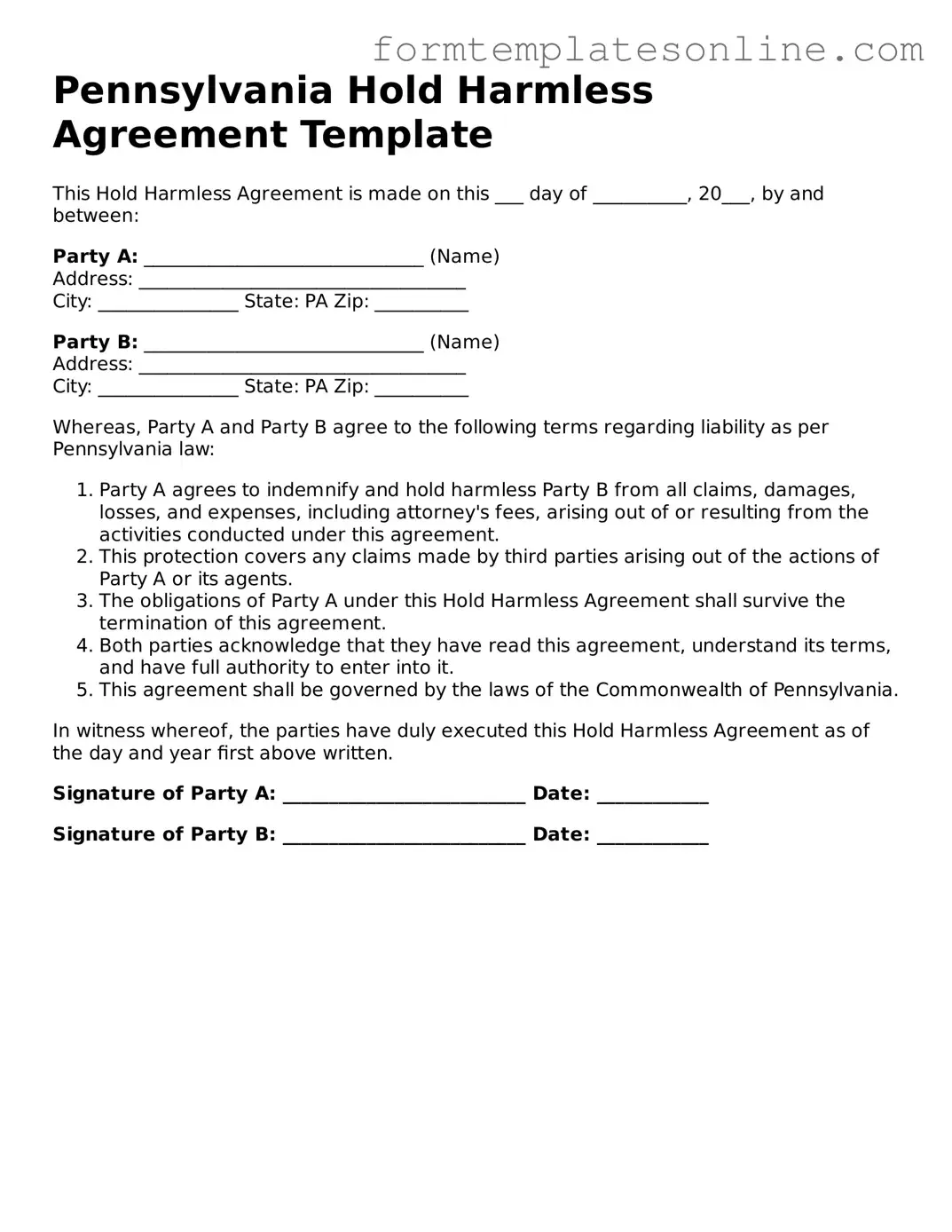What is a Hold Harmless Agreement in Pennsylvania?
A Hold Harmless Agreement is a legal document that protects one party from liability or claims that may arise from the actions or negligence of another party. In Pennsylvania, this agreement is often used in various contexts, such as construction projects, events, or rental agreements, to ensure that one party does not face financial or legal repercussions due to the other party's actions.
Who typically uses a Hold Harmless Agreement?
This type of agreement is commonly used by businesses, contractors, event organizers, and property owners. For example, a contractor may require a Hold Harmless Agreement from a client to safeguard against any claims resulting from work performed on the client’s property. Similarly, event organizers may ask participants to sign this agreement to limit their liability in case of accidents or injuries during the event.
What are the key components of a Hold Harmless Agreement?
A typical Hold Harmless Agreement includes several essential components: the names of the parties involved, a clear statement of the agreement's purpose, the scope of liability being waived, and any specific conditions or limitations. Additionally, it may outline the duration of the agreement and any applicable state laws that govern its enforceability.
Is a Hold Harmless Agreement legally binding in Pennsylvania?
Yes, a Hold Harmless Agreement can be legally binding in Pennsylvania, provided it is properly drafted and executed. The agreement must be clear and unambiguous, and both parties should have the opportunity to review it before signing. However, certain limitations may apply, especially in cases involving gross negligence or willful misconduct, where liability cannot be waived.
Can a Hold Harmless Agreement be modified after it is signed?
Yes, a Hold Harmless Agreement can be modified after it is signed, but both parties must agree to the changes. It is advisable to document any modifications in writing and have both parties sign the amended agreement to ensure clarity and enforceability. Verbal agreements regarding modifications may not hold up in court.
What should I consider before signing a Hold Harmless Agreement?
Before signing a Hold Harmless Agreement, it is crucial to carefully read and understand its terms. Consider the risks involved and whether you are comfortable waiving your right to seek compensation for potential damages or injuries. It may also be beneficial to consult with a legal professional to ensure that the agreement is fair and that you fully understand your rights and obligations.
Are there any risks associated with signing a Hold Harmless Agreement?
Yes, there are risks involved in signing a Hold Harmless Agreement. By signing, you may be relinquishing your right to seek compensation for injuries or damages that occur as a result of another party's negligence. It is essential to weigh these risks against the benefits of entering into the agreement and to consider whether the other party has adequate insurance coverage to protect you in case of an incident.
How can I ensure that my Hold Harmless Agreement is enforceable?
To ensure that your Hold Harmless Agreement is enforceable, it should be written clearly and comprehensively. Both parties should sign the document voluntarily, without any coercion. Additionally, including a clause that specifies governing law and jurisdiction can enhance enforceability. Consulting with a legal expert to review the agreement can also help ensure that it meets all necessary legal requirements.
